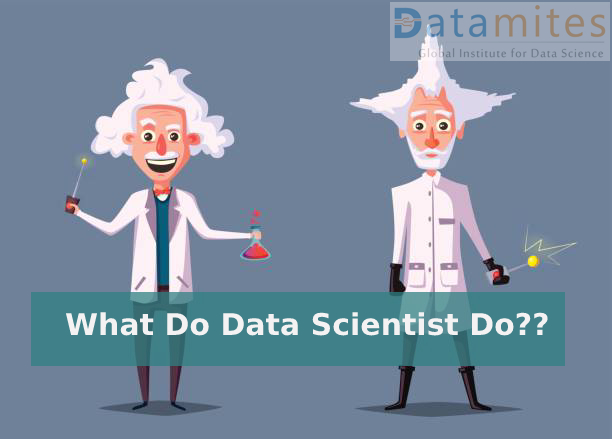Cloud-native Data Science
The fusion of cloud computing and data science is revolutionizing the way organizations handle data, providing unprecedented scalability, flexibility, and efficiency. Cloud-native data science leverages cloud platforms to manage, analyze, and interpret vast amounts of data seamlessly. For those looking to excel in this innovative field, enrolling in a data science training is crucial. This blog post delves into the intricacies of cloud-native data science, exploring its benefits and key applications.
Understanding Cloud-native Data Science
Cloud-native data science involves performing data science tasks—such as data storage, processing, and analysis—on cloud platforms. This approach harnesses the power of the cloud to handle large-scale data analytics projects, offering enhanced performance and resource optimization.
For example, cloud-native data science enables the use of distributed computing resources, allowing data scientists to process and analyze massive datasets efficiently. By leveraging cloud services like AWS, Google Cloud, or Azure, professionals can scale their operations according to their needs. A data science certification focusing on cloud-native techniques can provide valuable skills in utilizing these platforms effectively.
Scalability and Flexibility
One of the primary advantages of cloud-native data science is its scalability. Traditional on-premises data solutions often struggle to handle large-scale data operations, but cloud platforms can scale resources up or down based on demand. This flexibility is crucial for data science projects that require significant computational power.
For instance, a company analyzing customer behavior data can benefit from cloud-native data science by dynamically adjusting its computational resources during peak periods. This ensures efficient processing without the need for substantial upfront investments in hardware. Professionals can learn to manage and optimize these resources effectively through a comprehensive data science institute.
Cost Efficiency
Cloud-native data science also offers significant cost savings. By using cloud services, organizations can avoid the high costs associated with maintaining physical infrastructure. Instead, they can pay for only the resources they use, making it a cost-effective solution for many businesses.
For example, a startup can leverage cloud-native data science to perform complex data analyses without investing in expensive servers and storage systems. This pay-as-you-go model allows organizations to allocate their budgets more efficiently. Enrolling in a data scientist course can teach professionals how to maximize these cost benefits while maintaining high analytical performance.
Enhanced Collaboration and Accessibility
Cloud-native data science facilitates better collaboration among data science teams. With cloud platforms, team members can access data and analytical tools from anywhere in the world, promoting seamless cooperation and knowledge sharing.
For instance, data scientists working on a global project can use cloud-based tools to collaborate in real-time, regardless of their physical locations. This improves productivity and accelerates project timelines. A data scientist training that emphasizes cloud-native techniques can help professionals learn to use these collaborative tools effectively.
Advanced Analytics and Machine Learning
Cloud-native platforms offer advanced analytics and machine learning capabilities that are difficult to achieve with traditional on-premises solutions. These platforms provide access to a wide range of tools and frameworks that can accelerate the development and deployment of machine learning models.
For example, cloud-native data science allows data scientists to use pre-built machine learning models and tools provided by cloud vendors, such as Google's TensorFlow or AWS SageMaker. This accelerates the model development process and enables faster deployment. A data scientist certification can provide hands-on experience with these tools, preparing professionals to leverage advanced analytics in their projects.
Real-world Applications
The applications of cloud-native data science are vast and varied, spanning multiple industries. Here are a few examples:
Healthcare
In healthcare, cloud-native data science enables the analysis of large datasets to improve patient outcomes and operational efficiency. For example, hospitals can use cloud-based analytics to predict patient admissions and optimize resource allocation.
Retail
Retailers can benefit from cloud-native data science by analyzing customer data to personalize marketing strategies and improve inventory management. Cloud platforms allow for real-time data processing, enabling retailers to respond quickly to market trends.
Finance
The finance industry uses cloud-native data science to detect fraudulent activities and manage risks. By analyzing transaction data in real-time, financial institutions can identify suspicious patterns and take proactive measures.
Manufacturing
Manufacturers can leverage cloud-native data science to optimize production processes and predictive maintenance. By analyzing data from sensors and machines, they can improve efficiency and reduce downtime.
Cloud-native data science is transforming the way organizations approach data analysis, offering scalability, cost efficiency, enhanced collaboration, and advanced analytics capabilities. For professionals looking to thrive in this dynamic field, enrolling in a data science course is essential. These courses provide the skills and knowledge needed to harness the power of cloud platforms effectively.
As the adoption of cloud-native data science continues to grow, staying updated with the latest techniques and tools will be crucial. By integrating cloud-native approaches into their data science practices, professionals can drive innovation and deliver impactful insights across various industries. Whether you are an aspiring data scientist or an experienced professional, a data science course can equip you with the expertise needed to excel in the cloud-native era.
Refer these below articles:

Comments
Post a Comment